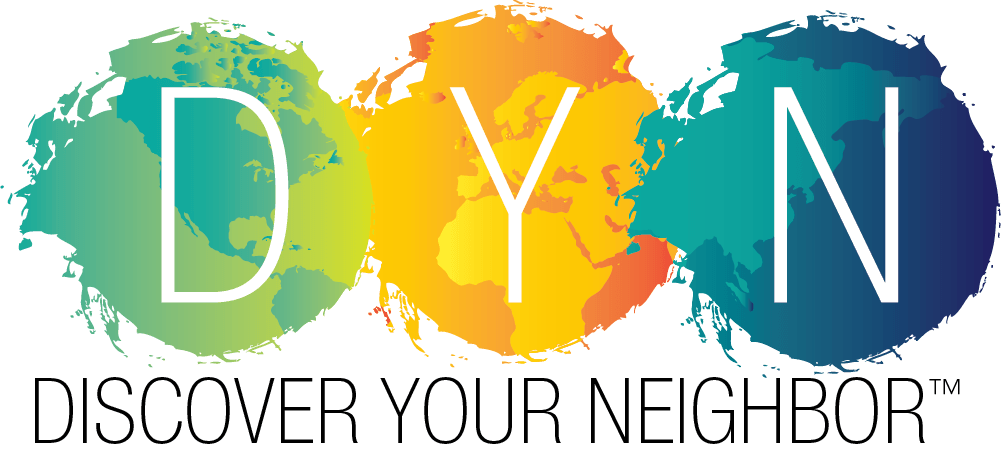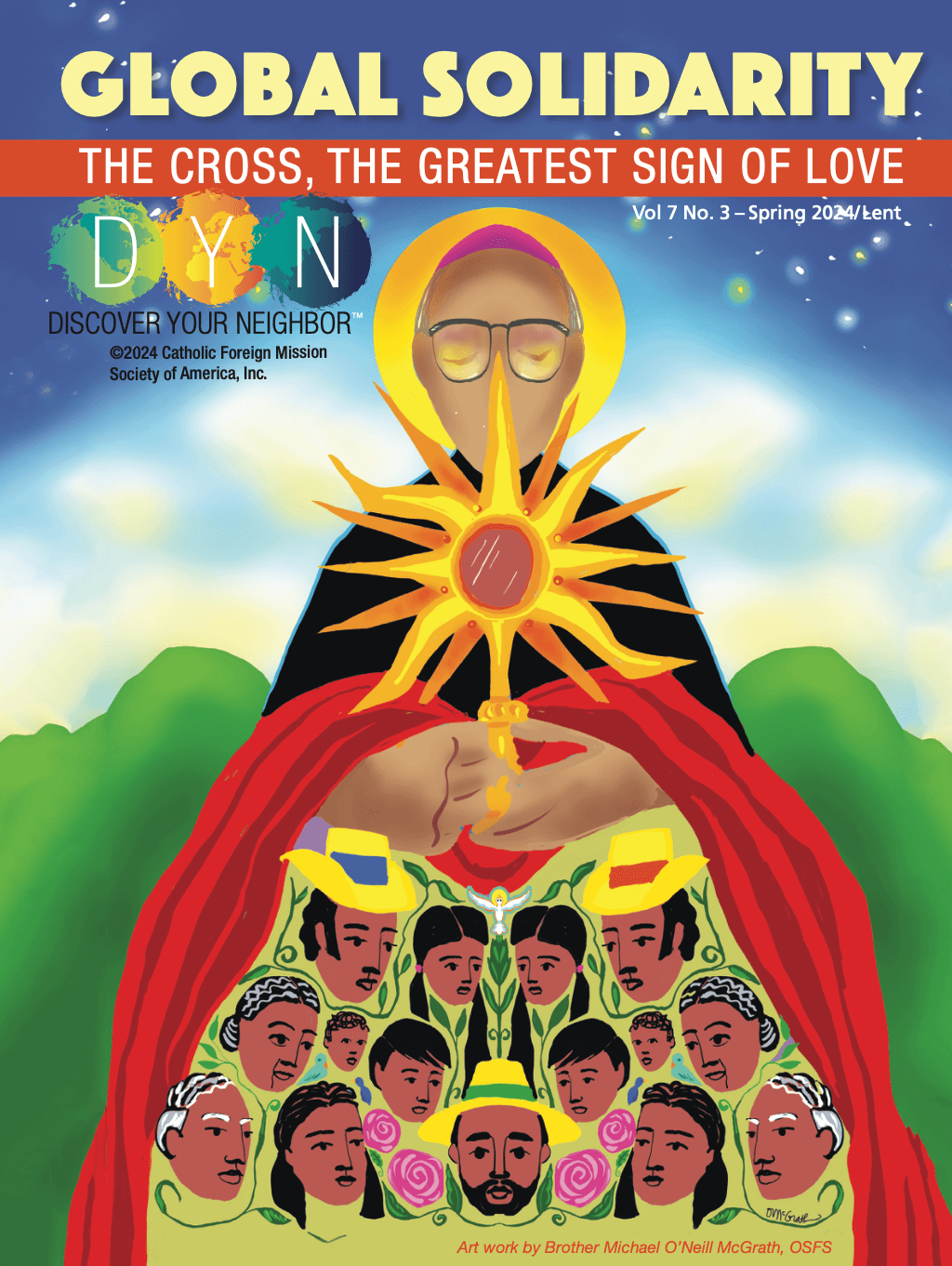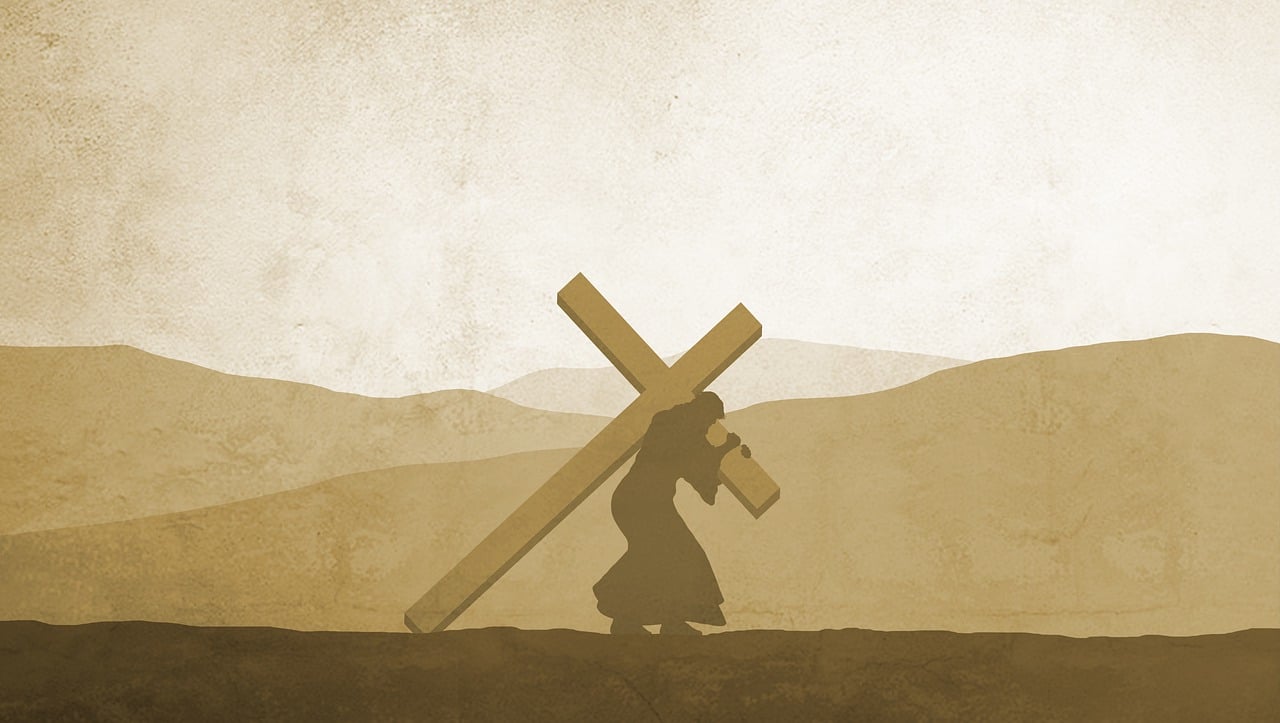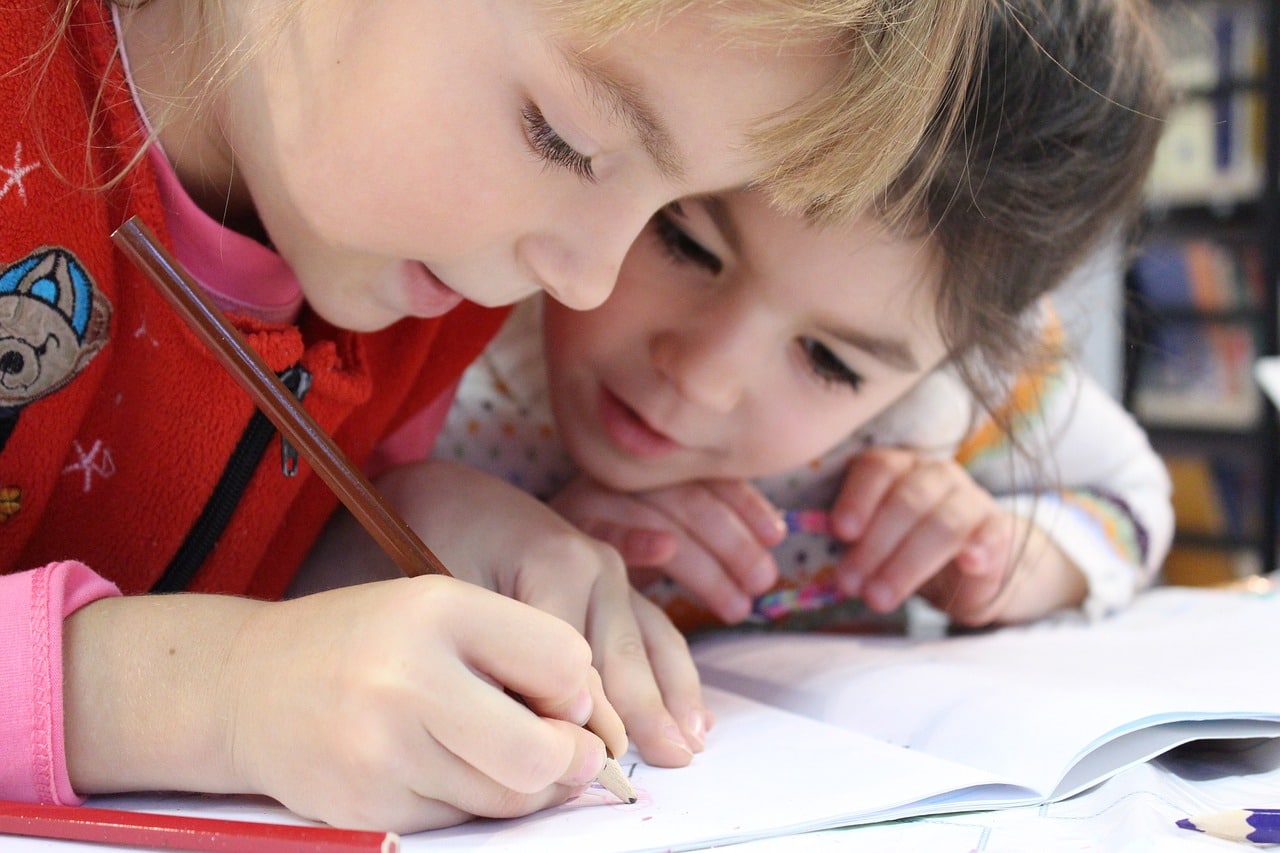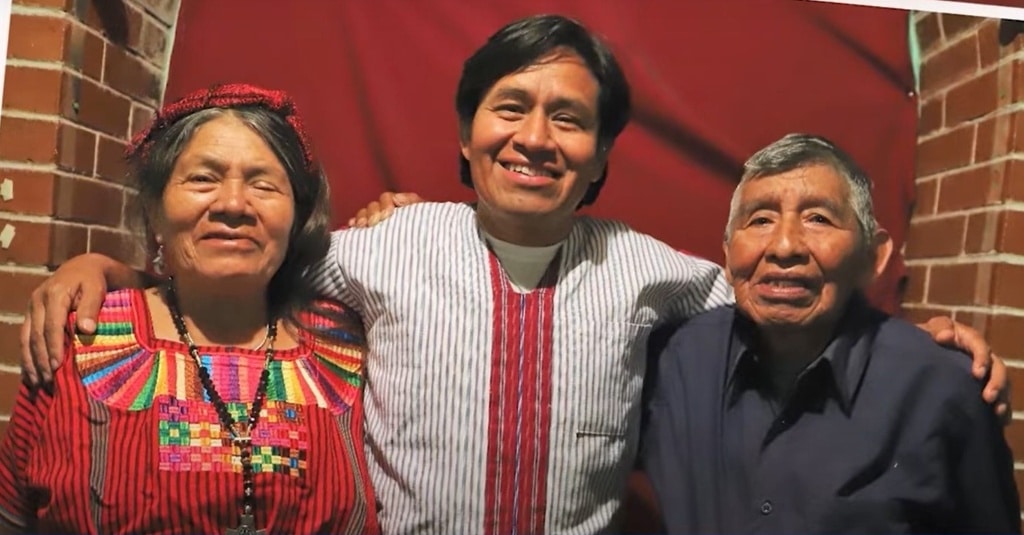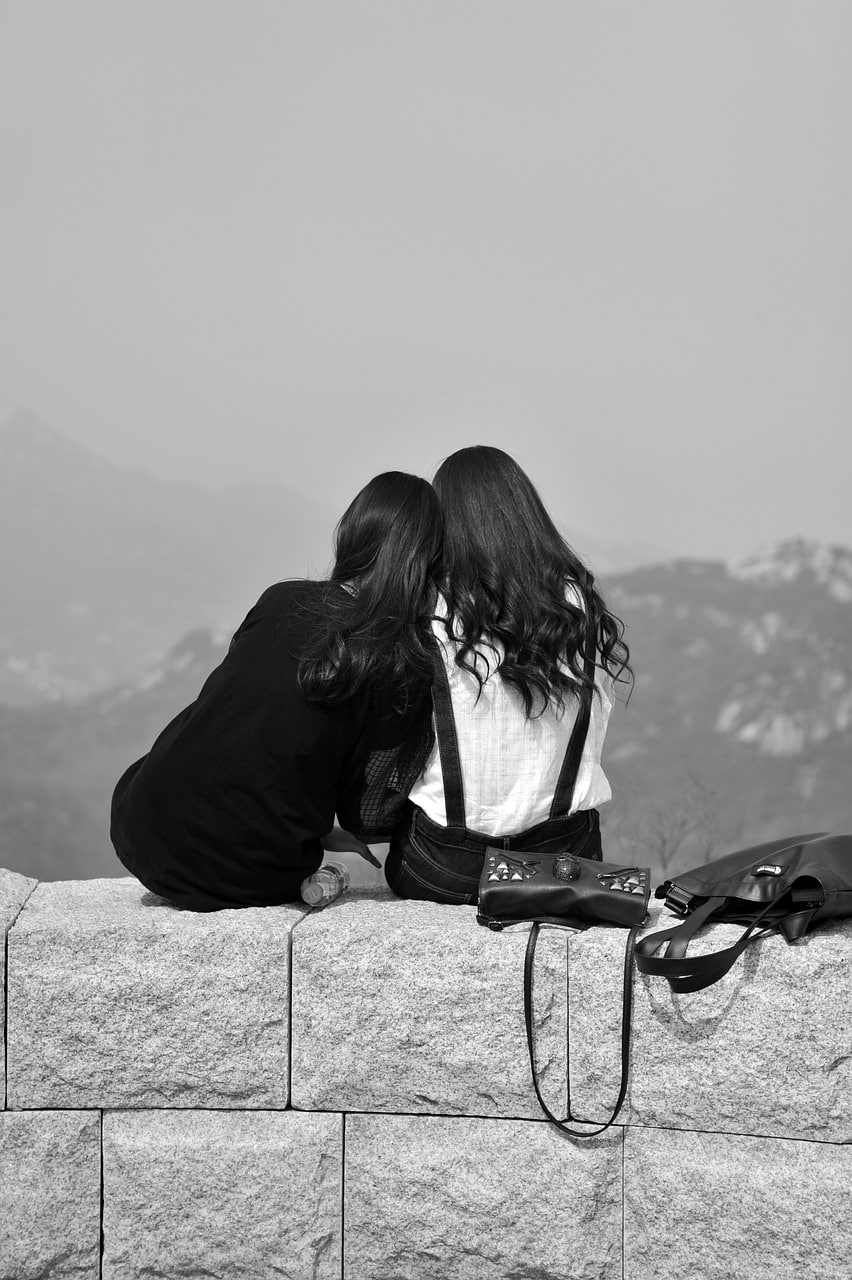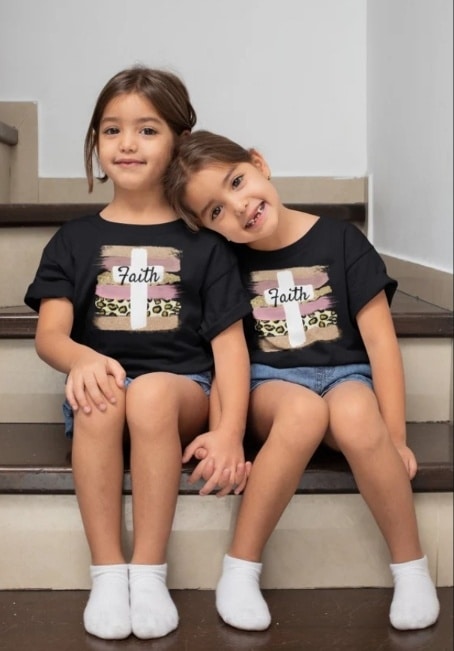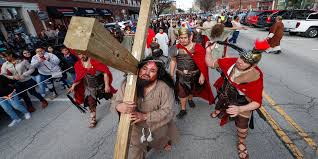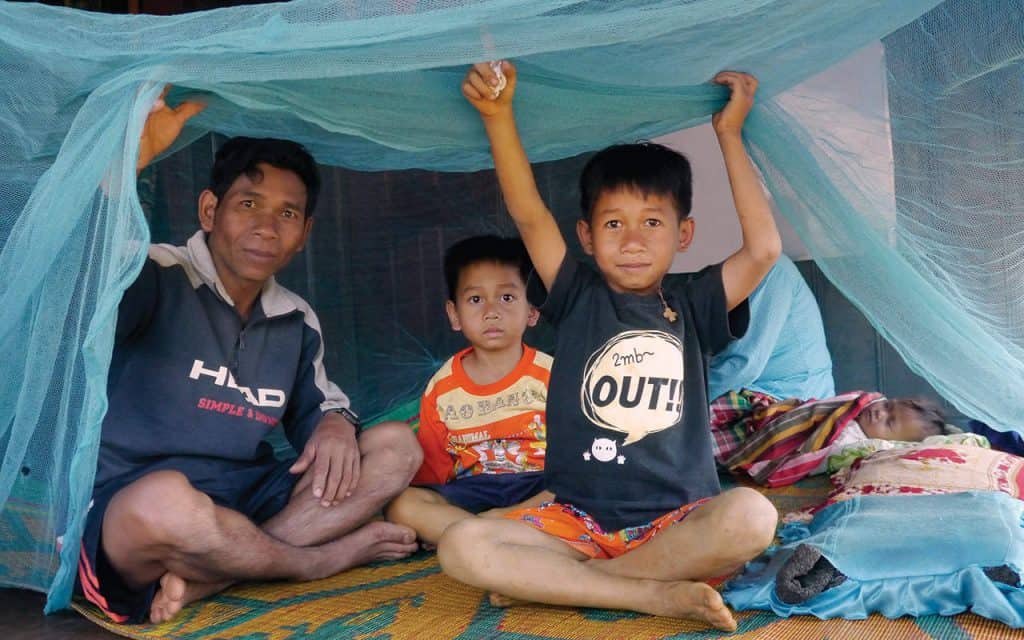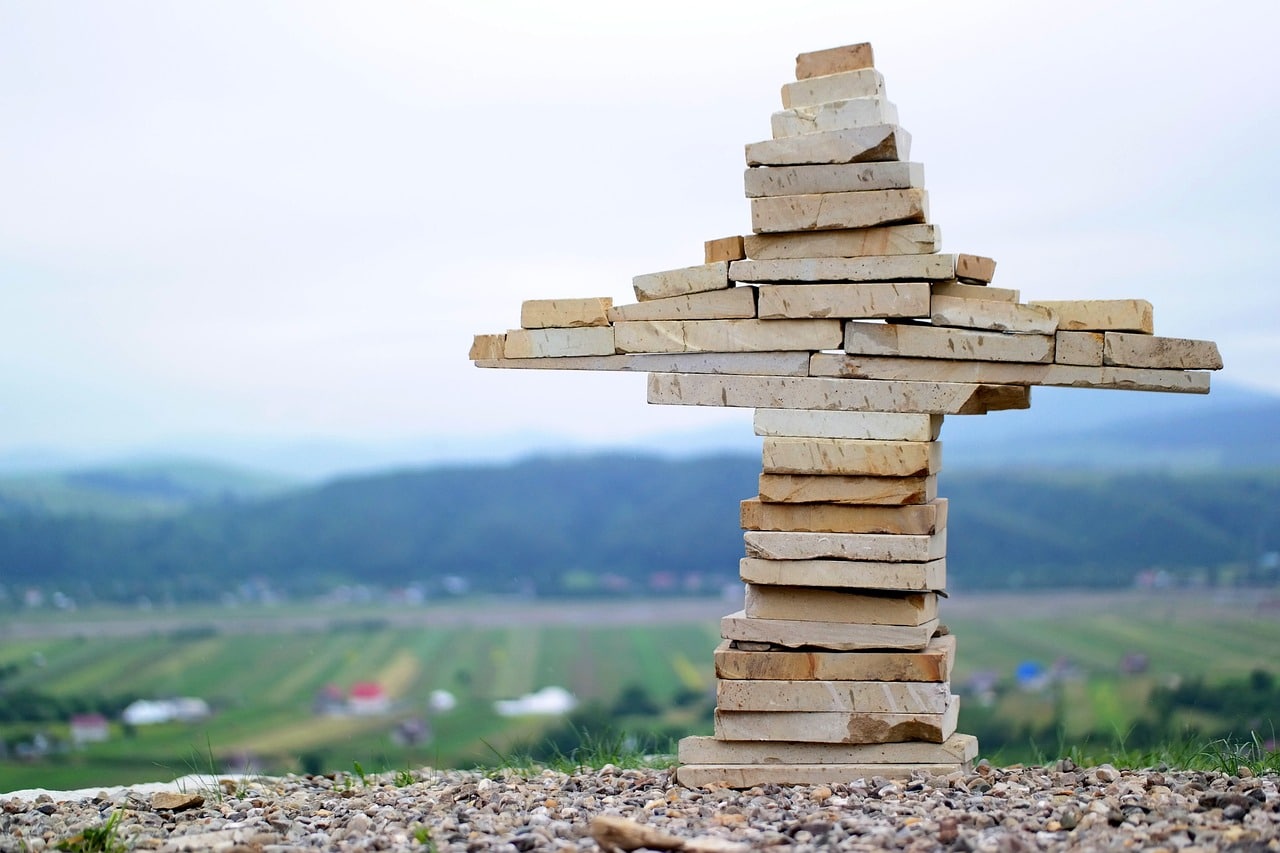Access your Middle School or K-5 Educator’s Guide for your classroom by filling out the form below. You will then be directed to a page where you can download a high quality PDF file to print out or share digitally.
Download the:
OBJECTIVE: In this lesson students will EXAMINE what it means to suffer or carry a cross as they read the story of Juanatano from Guatemala. They will CONNECT how Jesus’ suffering on the cross relates to those who are oppressed and treated unfairly in the world. They will REFLECT on how their suffering connects them in global solidarity with others. The students will be invited to IMPLEMENT what they learned by ORGANIZING a Stations of the Cross in their community.
As part of a group prayer, DRAW a cross on a large paper somewhere in the prayer space, then as a group WRITE on this paper people and communities (i.e. refugees, the elderly) in our world that are hungry, those in need of clean water, or health care, the people without shelter, and those treated unjustly or unfairly. If praying as an individual, use a journal and LIST the people and communities in the world who are carrying the cross of lack of food, love, clean water, health care, shelter and injustice.
PRAY: Jesus, during this Lent help us to see in your Cross all the crosses of the world:
the cross of people hungry for food and for love;
the cross of people dying from lack of clean water;
the cross of people sick and in need of health care;
the cross of people without shelter; people who treated unjustly;
Jesus, by the sacrifice of your cross you restored hope; help us to find the strength and courage to live your mission of mercy and share love and hope with those people burdened by the weight of their cross. AMEN
(adapted from Pope Francis)
Step 2: Personal Connections
MISSION STORY
As an advisor, consultant and spokesperson for the Mayan Indigenous communities, Juanatano Cano spends his days speaking at schools and religious events where he shares his life story. When he talks about all that he has experienced he is reminded of the moments of hardship throughout his life. He says, “Our stories are sacred, listening is an act of love. In my childhood and adolescence, they told me many times: ‘your culture and language are useless, they are not going to take you anywhere. To be successful you have to speak Spanish well. All of this led me to deny my own culture, but I discovered my identity by meeting the true Jesus who accepts me, embraces me just as I am.”
When Juanatano Cano was a child he witnessed the murders of many people in his city in Guatemala. As a kid he lived through the darkest period for Guatemala’s indigenous people during a civil war where thousands were killed. “I couldn’t sleep because of the trauma of seeing so much death,” recalls Cano.
So, when Cano turned 13, he fled to a different city to hide from the violence and finish high school. After graduation he wanted to return home but the war continued so he moved to Guatemala City. There he discovered a bitter reality. “The hardest thing in the capital is being indigenous, being Mayan, speaking our Q’anjob’al language,” says Cano. “They told me, ‘speak well,’ ‘don’t be an Indian.’ Being a teenager, that hurts, traumatizes and marks you for life,” he says. “I was ashamed of my dad and mom because they wore their Mayan dresses.” He asked himself, “What is my fault that God made me an Indian?”
These bad experiences motivated Cano to flee his country and migrate to the United States. It has been a long road for him— and it is the story of many people who continue to search for their identity, not only in their country but in the countries that welcome them.
Upon arriving in California, Cano, still struggling to connect with his indigenous roots through his Mayan culture, found strength in the faith that was instilled by the Maryknoll missionaries in his childhood. “I am Catholic thanks to Maryknoll,” Cano explains. At a very young age he met the Maryknoll Fathers Daniel Jensen and William Woods. “I admire the work of the American missionaries who served in Guatemala,” he says, “The missionaries worked hand in hand with the people and learned to speak the Q’anjob’al language, and even celebrated Mass in our language.”
Maryknoll began its missionary service in Guatemala in 1943 and one of their mission places was Cano’s hometown. Several missionaries accompanied and defended the indigenous communities from the genocidal war. Maryknoll’s legacy and its missionary works are still remembered in his town, Cano says. His brother was named Daniel, in memory of the late Father Jensen.
Cano recognizes the importance of having the Catholic faith instilled in him. “The encounter with Jesus has helped me regain my dignity and seek a purpose in life,” he says. “There is a healing process through accepting who you really are and forgiving the people who have hurt you during your life.”
ANSWER the following questions:
-
- What suffering or crosses did Juanatano have to live through?
- What did the Maryknoll missioners do to help the Mayan people?
- By telling his story Juanatano is helping himself and others heal. Tell your story of hardships and triumphs to someone, including others who have helped you along the way. Share your cross or story of suffering with a friend or trusted adult. What helps or helped you get through it?
- Juanato was teased and ridiculed as a child for who he was. What/Who do you think helped him? Have you been teased or ridiculed? Who/What helped you?
READ THE FOLLOWING:
Old Testament: Isaiah 41:9-10
Life of Jesus: John 15:12-17
Christian Living: 1 Peter 3: 14-18
REFLECT on the following questions:
- Pope Francis and Isaiah tell us that God is with us especially when we suffer and we should not fear. Can you think of a situation at school or at home where remembering that God is with you could help you not be afraid?
- Describe a time that you received love from a friend when you were down or hurting? How did Jesus show his friendship for us by dying on the cross?
- What is a way that a teen today could suffer from doing good? How could that person find hope in their suffering?
Jesus’ journey is this: God becoming one of us in order to walk by our side. The Cross which accompanies every World Youth Day is the image of this journey. It is the greatest sign of the greatest love, the love with which Jesus wants to embrace our lives. Jesus walks for us, he undertakes this journey for me, in order to give his life for me. And no one has greater love than those who give their lives for their friends, than those who give their lives for others. Do not forget this: no one has greater love than those who give their lives. Jesus taught us this; which is why, when we look at ;;. A very devout believer said, “Lord, as I contemplate your terrible sufferings, I find myself able to believe in love”.
Adapted from Pope Francis World Youth Day 2023
ANSWER the following questions:
- How do you show love for your friends?
- Friendship sometimes requires sacrifice. What have you had to sacrifice for a friend?
- What do you or could you sacrifice to show love to those that suffer in the world?
- Who has shown you love by the sacrifices that they have made for you?
- Maryknoll Fathers, Brothers, Sisters and Lay Missioners sacrifice each day around the world to show love to others, have you considered this as a sacrifice you would like to make with your life? If you were a Maryknoll Missioner where in the world would you want to serve? What would you want to do?
INSTRUCTIONS: For this activity, CREATE a prayerful, reflective space for the participants. CONSIDER low lighting and place a cross in the space. PICK two strong readers who practice reading the text slowly and reflectively. In the sections where there is a pause, allow participants to walk, or draw, etc. to quietly process their thoughts.
FIRST READER: I invite you to get comfortable and to find a position where you can quietly reflect on the words of this service.
At World Youth Day in Lisbon, Portugal, Pope Francis spoke to the youth who had gathered in solidarity from around the world. He explained that Jesus desires our company. Jesus walks besides us expressing his hope through love and tenderness, so as to give us consolation, to dry the tears of our lives.
SECOND READER: Pope Francis asks us to silently reflect on this question, do not answer out loud: Do you sometimes weep? Are there things in your life that make you cry? We have all cried in life, and we still weep. And Jesus is there with us, he weeps with us, because he accompanies us into those dark places that make us cry. In silence, share with Jesus what causes you to cry; let us tell him that now,
PAUSE in silence…
FIRST READER: Jesus dries our hidden tears with his tenderness. Jesus wishes to relieve our loneliness with his closeness. Moments of loneliness are sad indeed, yet Jesus is there; he wants to relieve that loneliness. Jesus wishes to calm our fears, he wants to calm those deep fears with his consolation. He also desires to encourage us to embrace the risk of loving. We must take the risk of loving, it is a risk worth taking. Jesus accompanies us as we do. He always accompanies us, always walks with us. Throughout our lives, he is always by our side.
SECOND READER: In the cross we journey with Jesus along the path of his suffering, along the path of our worries, the path of our loneliness. In silence, let each of us think about our own sufferings, our own worries, our own weaknesses. Do not be afraid, just think about them. And think of the desire our souls have to shine once more.
PAUSE in silence…
FIRST READER: Jesus journeys to the Cross, dies on the Cross, to enable our souls to shine. Amen.
REFLECT on these questions in a group or in a journal.
- Where do you weep for the world? For yourself?
- Where would you most like to shine to make a difference in the world?
- Jesus made the ultimate sacrifice on the cross for us, is there a sacrifice that you could make to better the life of others? How could you go about living out this sacrifice?
ORGANIZE a community station of the cross. Schedule a day, time, and place for a walk where you will pray the stations of the cross at stops along the way. This can be as simple as a parking lot, or a walk down a street, or a stop at several locations. INVITE classmates, families, and/or parishioners to join. (Note: if you are using public streets, you may need a permit). ASK everyone to MAKE and bring crosses (considering using the ones from the ENGAGE YOUR FAMILY section). On the crosses WRITE the names or places or DRAW those people suffering in our world who need our prayers.
You can find stations here. USE the Maryknoll stations to pray for those who by their suffering carry their crosses today.
Partner with Fr. William Senger, M.M. missioner in Guatemala who continues the work of faith formation. Visit Maryknoll.society.org for more information. WATCH Missioner, Serving the Mayan people in Guatemala on YouTube to see images of people engaged in their faith just as Juanatano describes in the stories from his childhood.
As a family, begin Lent by MAKING a cross together. You can decide what materials you want to use. This cross will be part of your prayer throughout Lent. You may also carry it in the Station of the Cross found in the RAISE YOUR VOICE section.
DECIDE on a time to pray together as a family. CREATE a prayer space where the cross will stay until Easter. In this space leave pens/pencils, slips of paper, and a bowl.
Begin your prayer with the sign of the cross. Open with a scripture verse found in this lesson plan. INVITE each person to write or draw answers to one or more of these questions:
- Where did I experience or witness difficulties or suffering?
- How did I or could I help others who are having a hard time?
- What can I ask my family and/or God to help me with?
Share your answers and then place what was written or drawn in the bowl by the cross. PRAY: Jesus, by the sacrifice of your cross you restored hope; help us to find the strength and courage to live your mission of mercy and share love and hope with those people burdened by the weight of their cross. AMEN
